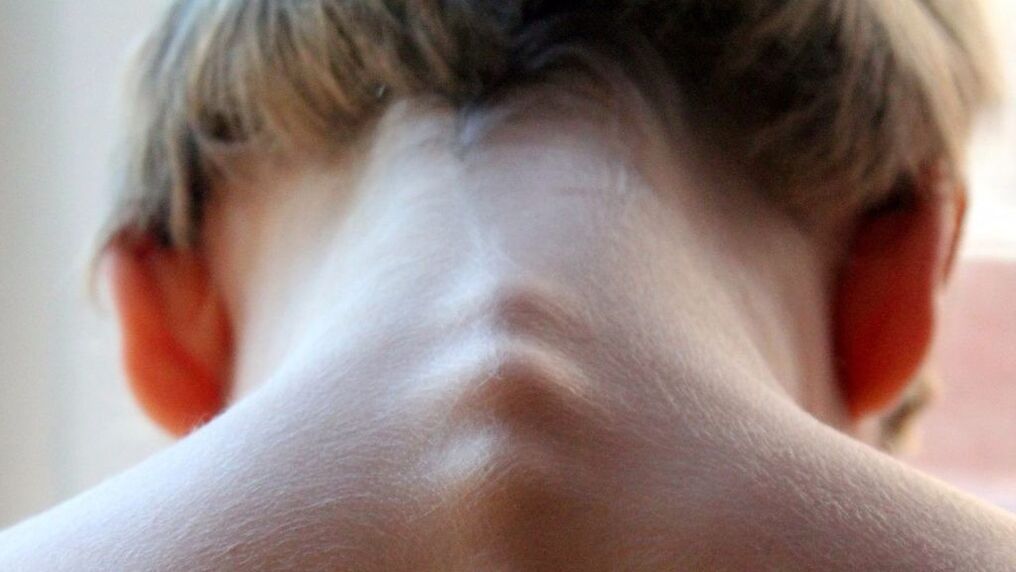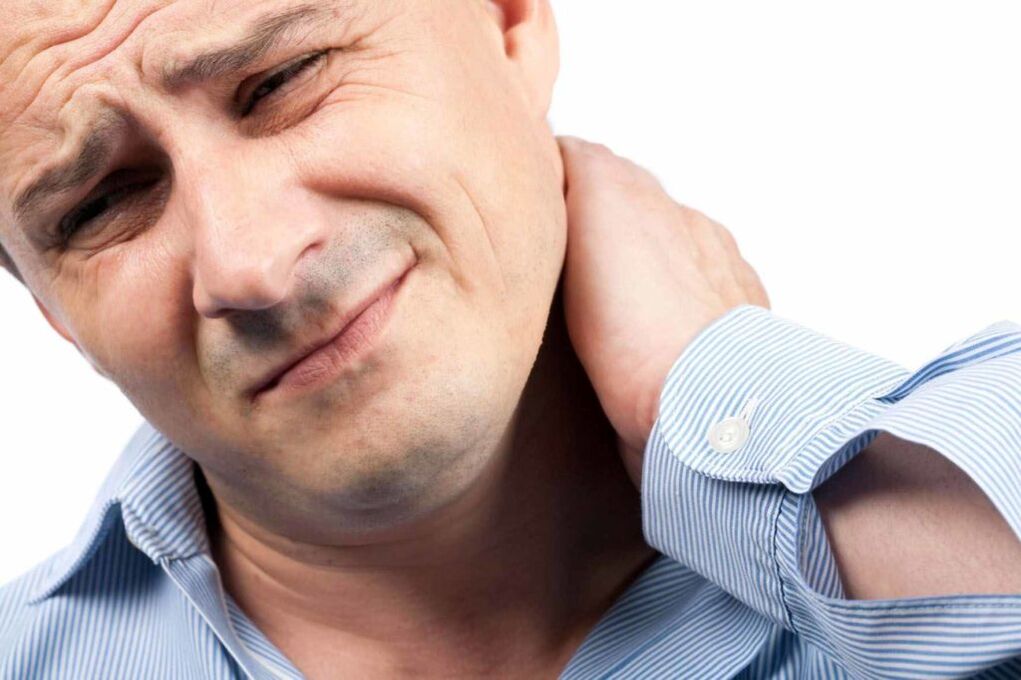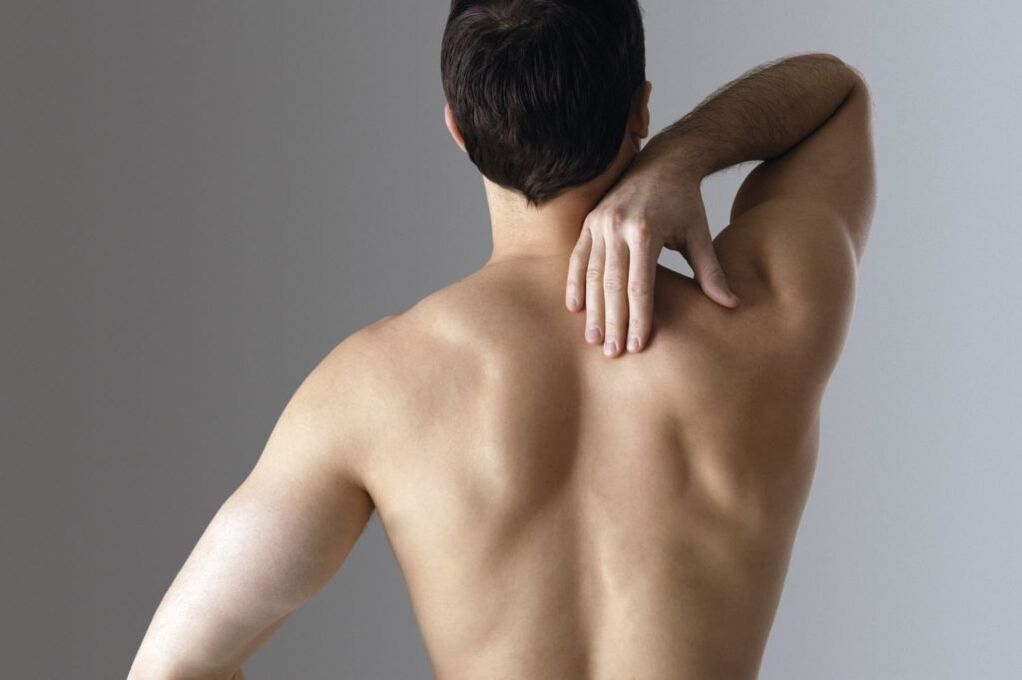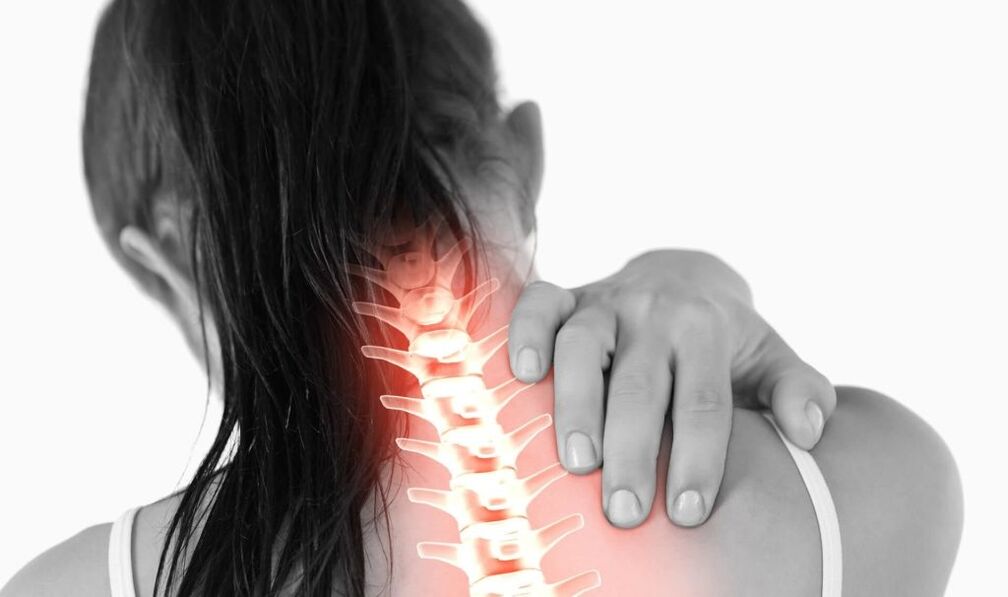Cervical osteochondrosis is a disease characterized by degenerative-dystrophic changes in the tissue of the intervertebral discs, which leads to a decrease in their height, damage to the joints between the vertebrae, squeezing blood vessels and roots of nerves.

Previously, pathology was considered a disease of people over 40 years old, but today osteochondrosis has noticeably younger, and is often diagnosed for schoolchildren and students for the first time. The disease leads to a number of complications. First of all, the blood supply to the brain worsens. The treatment of cervical osteochondrosis is a long -term process, and includes both drug and non -united therapy.
The causes of the development of the disease
The reasons for the development of cervical osteochondrosis are diverse. First of all, the disease appears due to the wrong lifestyle-hypodynamia, sitting work, overweight. At the same time, the main cause of osteochondrosis of the cervical region is a violation of blood circulation in this zone. As a result, the nutrition of fabrics of the intervertebral discs worsens, which entails a change in their structure. There are several factors that contribute to the development of this disease:
- hypodynamia;
- weak muscle back corset;
- Excess weight;
- neck injuries;
- stress;
- hypothermia;
- Systemic diseases of the connective tissue (red lupus, rheumatoid arthritis).

Hypodynamia is one of the most important factors in the development of diseases of the spinal column. Due to the lack of physical activity, people who spend a lot of time in a sitting position are faced with osteochondrosis. Much also depends on the posture and muscles of the back. The improper position of the neck during long -term work at the table leads to a violation of the food of the intervertebral discs, which over time pours into the degeneration of cartilage and the development of osteochondrosis. For this reason, the disease is often diagnosed with students and students, since their daily activity is associated with many hours of sitting at the table or at the desk. Also, osteochondrosis is often diagnosed with office workers and all people who spend a lot of time at the computer.
As a rule, the development of osteochondrosis occurs under the influence of several provoking factors at once. Many doctors consider osteochondrosis not an independent disease, but by a natural consequence of the wrong lifestyle. Constant fatigue, stress, incorrect body position during sleep or working at a computer, excess weight and bad habits - all this harms the health of the spinal column. As you know, a strong back is the key to good health and longevity. Despite the fact that osteochondrosis does not threaten life, this violation is able to significantly worsen the general well -being and cause the development of other diseases, therefore it is important to detect the disease in a timely manner and undergo complex treatment.
Symptoms of the disease and the degree of osteochondrosis

Pain syndrome occurs against the background of the progression of the disease. The growth of symptoms of cervical osteochondrosis in women and men is a long process. From the moment the changes in the tissues of the intervertebral discs, before the first signs of cervical osteochondrosis, can take more than one year in the appearance of the intervertebral discs. There is no difference in the symptoms of cervical osteochondrosis in men, women and children. The only difference: at a young age, the symptoms are not expressed as clearly as in the elderly. It is lubricated symptoms that are due to difficulties in the treatment of cervical osteochondrosis. A person does not see a doctor until pronounced symptoms of the disease that bring discomfort. This happens at least 5 years after the onset of the degeneration of the cartilage tissue of the intervertebral discs. In the early years of development, osteochondrosis of the cervical spine is practically not accompanied by clinical manifestations. Perhaps only a slight feeling of numbness of the upper back after sleep or short -term muscle cramps at the moments of psycho -emotional overvoltage. In order to understand the signs of cervical osteochondrosis in men and women, one should consider the degree of this disease that characterize the severity of the pathological process in intervertebral discs.
The first (preclinical) degree of disease: symptoms and features
With cervical osteochondrosis, symptoms and treatment depend on the stage of the pathological process. The first degree is called preclinical, since it does not have characteristic clinical symptoms. It is possible to recognize osteochondrosis at this stage only by hardware diagnostics - changes in discs are visible on an X -ray (not always) and are well visualized on MRI and CT. At the first stage of the disease, there is a violation of the trophism (nutrition) of the intervertebral discs. As the disease progresses, an elastic cartilage tissue is compacted. Disks become harder, as a result of which the vertebrae lose mobility. Thus, degenerative-dystrophic processes begin, leading to a violation of the function of the cervical spine. As a rule, the symptoms become noticeable already at the second stage of the development of the disease, but expressed so weakly that they rarely bother a person. The first degree of the disease goes the following in a few years.
Symptoms of osteochondrosis of the second degree

The second degree of cervical osteochondrosis is characterized by an increase in muscle tone in the area of damage. How can you cure cervical osteochondrosis - it depends on the severity of the disease. If the preclinical stage often proceeds unnoticed by the patient, the second degree of the disease acquires some symptoms that should alert the patient and make him see a doctor. Is it possible to completely cure cervical osteochondrosis - it depends on the severity of the pathological process. The sooner therapy is started, the more favorable the prognosis. In the second stage of the disease, the discs between the vertebrae are compacted. The neck loses mobility, but in ordinary life this practically does not interfere with the patient. A characteristic symptom is an increase in muscle tone of the affected area. With prolonged physical exertion, sharp movements of the head, after a long sleep, numbness and muscle hypertension can be observed. Sudden movements lead to acute pain. This is due to the fact that the spasmodic muscles compress the nerve, causing severe pain. Pain can be given to the shoulder blade, neck, less often - in the lower limbs. Such variability of the pain syndrome is due to a large number of nerves roots located in the cervical region.
The first signs of cervical osteochondrosis are the following symptoms:
- fatigue;
- headache;
- dizziness after sleep;
- pain in the cervical region with sudden movements;
- Local numbness of the skin of the cervical region.
As a rule, in the second stage of the disease, symptoms appear only from time to time. This is usually due to severe overwork or intensive physical exertion. Most patients do not pay due attention to easy malaise, expecting the discomfort itself. In general, this is how it happens, symptoms rarely bother a person longer than a few hours and pass without taking special drugs.
Features of osteochondrosis of the third degree

Symptoms of osteochondrosis of the cervical spine of the third degree are pronounced. If at the first stage of the disease the changes only begin, the second degree is characterized by a compaction of discs of the discs, then on the third degree of osteochondrosis there are cracks and microwaves of the fibrous ring of the disk. Perhaps the formation of a hernia - the loss of a pulpoose nucleus in the intervertebral space. This is accompanied by a violation of cerebral circulation, since flattened discs strongly compress the spinal artery. A typical symptom is a severe headache, frequent dizziness, flickering flies in front of the eyes. With osteochondrosis of the third degree, a feeling of heaviness in the neck is constantly present. The muscles are almost always spasmodic, a person feels heaviness and aching pain. Long -term stay in one position, tension of the neck muscles or sleep on an uncomfortable pillow lead to local numbness of the skin or a strong attack of pain. You can feel changes with palpation - the neck muscles become solid to the touch, pressure causes severe pain. A sign of cervical osteochondrosis in men is severe pain at loads (women less often load this spine in everyday life).
Features of the fourth degree
The stifled nerve disrupts blood circulation and causes severe pain in the neck. The fourth stage of the disease is the most difficult. At the same time, irreversible changes occur in the structure of the disks. The pathological process spreads from the fibrous ring to vertebrae. Signs of osteochondrosis of the cervical spine in this case are described by several syndromes - these are rooser, reflex, spinal syndrome. Severe pain is observed along the stifled nerve, disturbances in cerebral circulation. At this stage, the symptoms of cervical osteochondrosis are diverse. Frequent myalgia (muscles), neuralgia, migraines arise. The pain extends to the chest, the patient may encounter discomfort in the heart, which is associated with intercostal neuralgia against the background of left -sided osteochondrosis.
How to cure osteochondrosis?
Such a disease of the spine requires a doctor's intervention

How best to deal with cervical osteochondrosis - only a doctor can answer this question. There is no universal treatment for cervical osteochondrosis, it all depends on the characteristics of the course of the disease in a particular patient. Patients are often interested in which of the doctors treats cervical osteochondrosis. Typically, the initial diagnosis is made by the therapist or neurologist, to whom patients have complained about pain in the cervical region. To make a diagnosis, it is necessary to make a neck X -ray in three projections and MRI, check the presence of a symptom of Neri. The method of treating cervical osteochondrosis will depend on the examination results, the therapy is selected by the neurologist. How exactly the cervical osteochondrosis is treated-depends on the stage of development of degenerative-dystrophic changes in discs. At the initial stage of the disease, special physical education will help both get rid of symptoms of osteochondrosis in the cervical region, and prevent the further spread of the pathological process.
The treatment methods for osteochondrosis are different. Complex therapy includes:
- drug treatment;
- Exercise therapy;
- physiotherapeutic procedures;
- Manual therapy.
Symptoms and treatment of osteochondrosis depend on the severity of pathological changes in the cervical spine. The treatment of osteochondrosis of the neck should be prescribed by a doctor, self -medication will not bring a result and may be dangerous.
Medicines
The first thing to do with cervical osteochondrosis is to eliminate pain and muscle spasm; This is the first aid to the patient. For this purpose, non -steroidal anti -inflammatory drugs, analgesics and muscle relaxants are used. As a rule, this allows you to relieve discomfort in a matter of hours. The relief of muscle spasm in itself is an effective method of treatment, as it restores nervous conductivity and blood circulation in the cervical region. How to treat cervical osteochondrosis in the future depends on the degree of development of pathological changes. Doctors often prescribe:

- B vitamins to restore nervous conduction;
- chondroprotectors to improve the nutrition of cartilage fabric of intervertebral discs;
- nootropics to improve cerebral circulation;
- products that improve the rheological properties of blood;
- Sedatives to relieve stress.
Not all of the listed groups of drugs are advisable to use at different stages of the disease. Exact methods of treating cervical osteochondrosis will be selected by the doctor.
Exercise therapy
Media physical education copes well with osteochondrosis at the initial stage of development. Medical physical education is the most effective treatment of cervical osteochondrosis at the initial stage. Osteochondrosis in children and adults occurs due to the weak muscles of the back, so this treatment is aimed not only at eliminating the symptoms, but also to eliminate the cause of the disease. Classes of therapeutic exercises take place in the special office of the clinic. Exercises are selected individually for each person and are performed under the supervision of a doctor. Whether cervical osteochondrosis is treated - depends on how quickly a person has contacted a doctor. The first degree of disease can be cured by gymnastics alone. Symptoms of osteochondrosis of the cervical vertebrae take place after several such classes, as muscle spasm decreases.
Physiotherapy

Chronic osteochondrosis, the symptoms of which may practically not bother a person, are treated with physiotherapy. This method is aimed at restoring the normal nutrition of fabrics of the intervertebral discs. Usually used electrophoresis with nicotinic acid to expand blood vessels and improve blood circulation. This treatment method relieves the symptoms of cervical osteochondrosis with radicular syndrome and migraine, as it reduces the compression of nerves and improves cerebral circulation. The main symptoms of cervical osteochondrosis can be eliminated by magnetotherapy or heat exposure. Only 10-15 procedures normalize trophic in the cervical region and eliminate the symptoms of the disease.
Forecast
Whether the cervical osteochondrosis is cured - it depends on the severity of the disease. At the initial stage, the pathological process is completely turned. Intervertebral discs are restored with the right approach, but slowly. Treatment is aimed at preventing the progression of the disease and restoring the elasticity of cartilage. With advanced forms of the disease, it is almost impossible to return the former mobility of the neck. Comprehensive treatment of osteochondrosis of the cervical spine in this case allows you to get rid of the symptoms and prevent the development of complications. In severe cases, the patient will have to undergo preventive treatment twice a year.



















